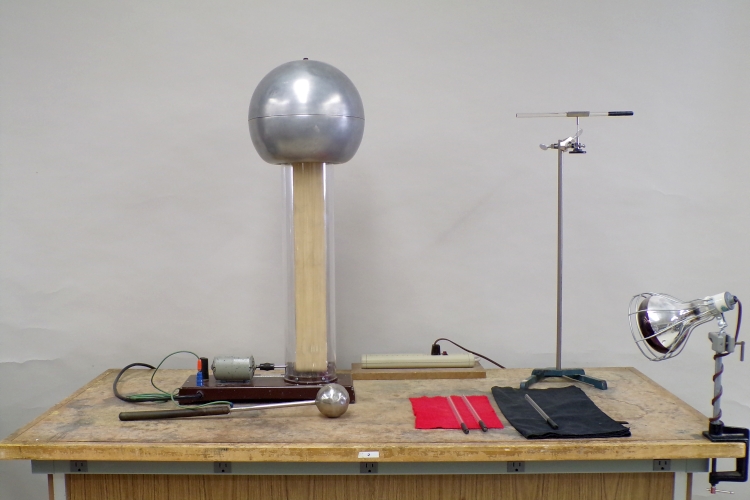
The operating Van de Graaff generator attracts the glass rod rubbed with silk (positive), but repels the plastic rod rubbed with felt (negative). Important! Always use the grounded wand to turn the generator on and off.
Several of the demonstrations in this chapter, for example 56.06 -- Electrostatically charged rods, 56.09 -- Charge pith balls and 56.18 -- Induced charging of metal spheres, show that like charges repel and opposite charges attract. They also illustrate the phenomenon of triboelectricity – the transfer of charge from one object to another by friction. In this demonstration we use these phenomena to show the sign of the charge that accumulates on the Van de Graaff generator when it runs. The plastic rods used in this demonstration are glycol modified polyethylene terephthalate (PETG). When you rub them with the wool exciter (red), they charge negative. When you rub the glass rods with the silk (black), they charge positive. Charge one of the rods, place it on the swivel, and turn on the generator. After you have discharged the generator with the wand, do this again with a rod of the other type. Since the dome of this generator charges negative, when you do this with the glass rod, the charged end is attracted by the dome of the Van de Graaff generator and swings toward it. When you do it with the plastic rod, the charged end is repelled by the dome of the generator and swings away from it.
The rods should be fairly stable in the swivel cradle, but you should take care not to put any downward pressure on the cradle, and to place the rods near the balance point. If one of the plastic rods should fall, it probably will not be damaged, but if one of the glass rods should fall, it is very likely that it will break.